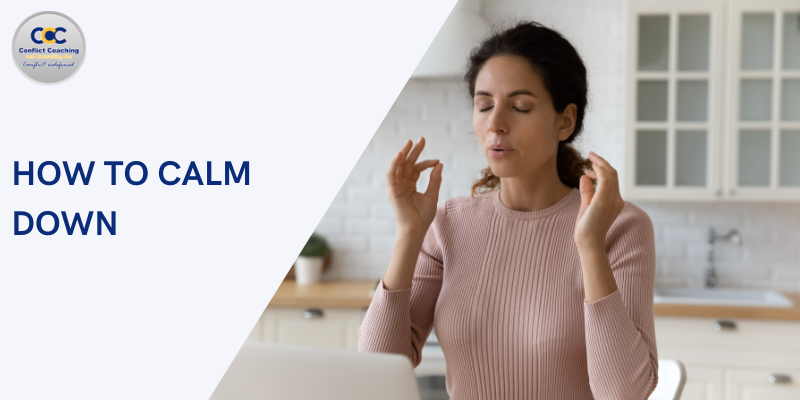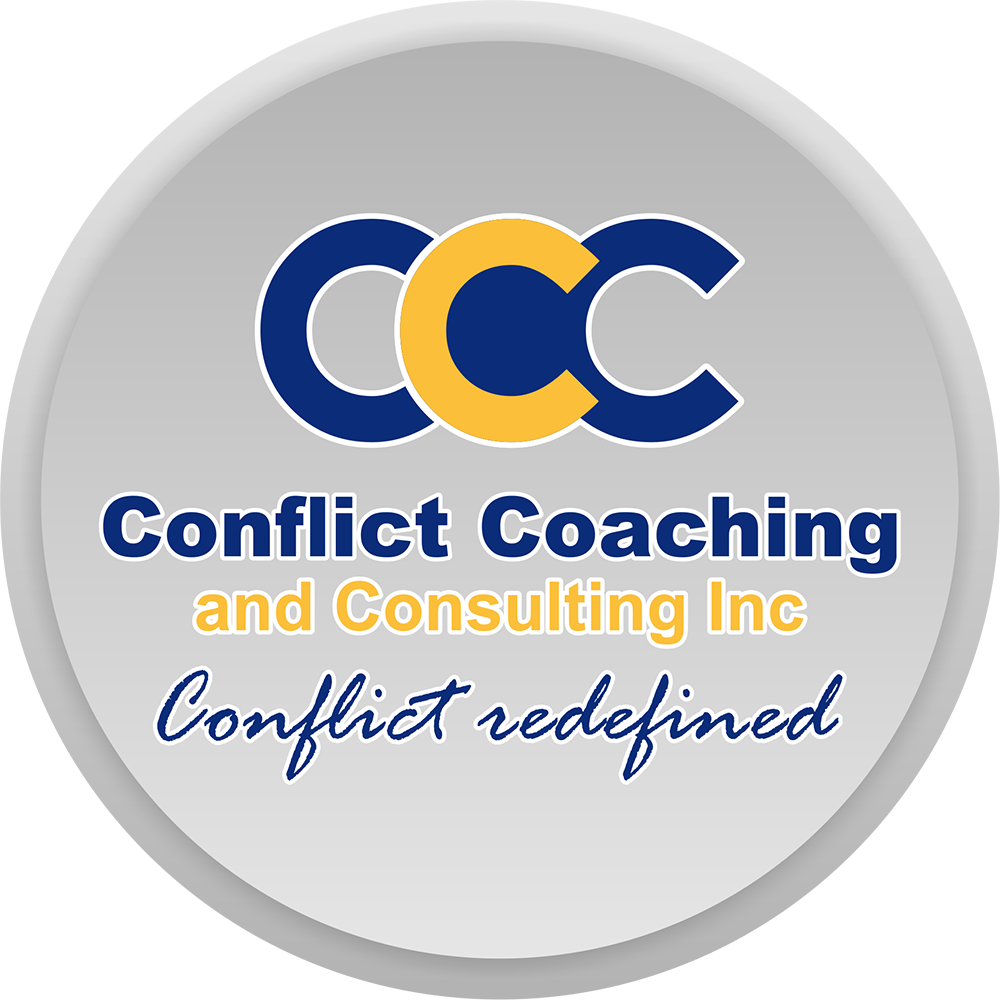
How To Calm Down and Manage Your Emotions
Much like we all experience happiness and sadness, it is normal for human beings to experience emotions like worry, anxiety, or anger. It is important to understand that every emotion serves a purpose.
Now, you may be wondering what purpose worry or anxiety can serve. Such emotions can help you be alert to danger or, in some ways, motivate you to take a step that you may have been struggling with.
However, it is important to note that there may be times when these emotions become overwhelming and difficult to manage, causing stress or frustration. In moments like these, it is often difficult to calm down. It is important to remember, though, that this is part of being human.
The effects of stress on the body and mind are significant. The body releases stress-related hormones, such as cortisol, to prime us for a fight-or-flight reaction.
Short-term stress is beneficial, but long-term stress can have detrimental effects on mental health and cause physical symptoms like headaches, tense muscles, or lightheadedness.
Unmanaged stress can eventually damage our relationships, reduce productivity, and negatively impact our general quality of life, making it much more difficult to deal with difficulties.
This is why it’s crucial to have coping mechanisms for these feelings. By building strategies for calming down, we can arm ourselves with useful ways to restore control in stressful situations.
These resources can assist us in ending the stress cycle, bringing us back to the here and now, and cultivating a sense of serenity that enables us to face life’s challenges with more resilience and clarity.
13 Ways to calm down
Here is the guide that we have prepared for you:
1. Breathe
Let us walk through the first way how to you calm yourself down when in a state of stress together.
Breathing is a natural process that we undergo every second without a second thought. Therefore, you may wonder how breathing can help you calm down. Let us break it down for you.
You may have noticed that when you get stressed, your breathing becomes shallow and rapid, which ends up giving your brain a signal to your brain that you are in danger. This, in turn, triggers a flight or fight response, which increases the feelings of stress that you may have been feeling.
To disrupt this cycle, by slowing down, focusing, and deepening your breathing, your body and mind can return to their normal state, which in turn brings you into a state of calm. This is one of the most accessible ways of staying calm and reducing your stress.
According to physiological principles, deep, slow breathing activates the parasympathetic nerve system, which controls the body’s “rest-and-digest” processes.
By lowering blood pressure and heart rate and encouraging relaxation, this system combats the stress reaction. If it is regularly performed, intentional breathing is a useful technique for regaining control during times of overwhelm.
Let us introduce you to a simple three-part breathing exercise:
- Inhale deeply through the nose, filling the belly, ribs, and chest.
- Hold your breath for a moment.
- Exhale slowly and fully through the mouth. As you do this, focus on how your body feels with each breath, bringing your attention away from stressors and into the present moment.
Here is a more advanced breathing technique: the 1:2 Breathing Ratio:
- Inhale for a count of 4 through the nose.
- Exhale for a count of 8 through the mouth. This extended exhalation deepens the calming effect, helping to soothe the mind and body further.
Regularly using these strategies, even when you’re not under stress, can help you become more accustomed to them so you can use them when you feel stressed.
Simple yet effective breathing techniques provide a dependable means of regaining calm and focus when emotions are running high.
2. Count to 10
Counting to 10 in times of stress, anger, or frustration is a straightforward technique that is extremely helpful. It offers a quick yet efficient break, allowing your brain to restore control by stopping the immediate emotional response. You can slow down and establish a mental buffer between a triggering event and your response by simply counting.
Making harsh decisions or having racing thoughts often happens when we feel overwhelmed. In such situations, counting to ten can shift your focus from the immediate rush of emotions to a more neutral place.
The flight or fight response that comes into immediate effect is reduced, and a more rational part of the brain is activated and engaged.
Deep breathing combined with counting will have a more soothing impact. For instance:
- Take a deep breath and mentally count to one.
- When you exhale, count “two,” until you reach”ten.” By calming your breathing and bringing your thoughts even closer to the earth, this combination enhances relaxation.
For a little longer pause, try counting backward from 20 if 10 counts don’t seem like enough.
The secret is to utilize counting as a technique to recover control and disengage from instantaneous emotional reactivity. You can react to difficult situations with more composure and clarity if you regularly practice this easy method.
3. Practice mindfulness
Being aware can help you relax both mentally and physically, especially when you’re feeling stressed, anxious, or overwhelmed. By concentrating on the present without passing judgment, mindfulness helps you separate from your speeding thoughts and intense feelings.
Mindfulness makes room for clarity and a sense of control by concentrating on the present moment. It is extremely natural to fall into a loop or spiral of “what if” thoughts when you are under stress, which can further amplify the worry or frustration.
By focusing your attention on the present moment, such as your breath, the feel of your feet on the floor, or the sounds around you, mindfulness breaks this loop. The parasympathetic nervous system is triggered by this present-focused attention, which lowers the fight-or-flight reaction and encourages relaxation.
Body scanning is a basic mindfulness exercise:
- Close your eyes and take a comfortable seat.
- Beginning at your toes and working your way up, gradually draw attention to various body regions.
- Just be present and observe any feelings without attempting to alter them.
Another method that you can use is mindful breathing. This involves concentrating only on the flow of your breaths and bringing your thoughts back to your breathing if they stray.
Over time, regular mindfulness practice weakens the influence of negative thoughts and trains your brain to remain in the present. You may strengthen your ability to withstand stress and create a dependable tool for finding peace in the face of life’s obstacles by incorporating mindfulness into your daily practice.
4. Visualize relief
This process of calming down involves the usage of your imagination to create or go into a peaceful and comforting scenario. This way, you can escape from the stress and anxiety of real life and shift your focus by enabling a mental escape for yourself.
By utilizing your brain’s capacity to link peaceful feelings with vivid pictures, visualizing relief can help you de-stress and regain control.
Your mind frequently goes through worst-case scenarios or elevated emotions when you’re under a lot of stress. This is broken by visualization, which directs your thoughts towards calming and uplifting images. Your body relaxes, and your heart rate decreases due to this change in the stress response.
The method increases the relaxing effect of the imagined experience by activating your brain’s sensory centers and making it seem real.
To practice, close your eyes and visualize a calm scene or location, such as a forest, a quiet beach, or even a cherished memory. Use all of your senses: picture the pine tree aroma, the sun’s warmth, or the sound of the waves. Allow the tension to subside as you concentrate on these specifics.
Another strategy is to picture a balloon lifting your anxieties into the sky or a wave releasing your anxiety. Train your mind to swiftly enter this soothing state by practicing visualization regularly. This makes visualization a dependable strategy for managing stress and anxiety during trying times.
5. Progressive muscle relaxation
The next method for calming down is called Progressive Muscle Relaxation (PMR). This entails methodically tensing and then relaxing various bodily muscle groups. This technique offers a profound sense of relaxation and aids in the release of bodily tension brought on by stress.
By emphasizing the difference between tension and relaxation, PMR teaches you how to let go of stress and increases your awareness of its effects on your body.
A stiff posture, headaches, or tense muscles are common physical symptoms of stress. By calming the body, PMR breaks this loop and soothes the mind.
Additionally, it stimulates the parasympathetic nervous system, which lowers the fight-or-flight response and encourages rest and recuperation.
Here is how you can practice PMR:
- Find a quiet place to sit or lie down.
- Start with one muscle group, such as your feet. Tense the muscles tightly for 5–10 seconds, then release them completely.
- Move upward through your body—legs, stomach, hands, arms, shoulders—tensing and relaxing each group in turn.
- Pay attention to the feeling of relaxation spreading through your body.
By practicing PMR regularly, you can train your body to recognize and combat tension, making it a valuable tool for managing stress, anxiety, and physical discomfort.
6. Challenge negative thoughts
One of the most important strategies for reducing stress and anxiety is to confront unpleasant ideas. Negative ideas are frequently habitual and skewed, which causes strong emotional reactions.
You can escape their hold and swap them out for more realistic, balanced viewpoints that support emotional well-being by recognizing and challenging these ideas.
Negative thought patterns such as catastrophizing can often lead you to exaggerate a situation, which can, in turn, amplify feelings of stress. When you challenge such thoughts, you ask questions like: Is this thought based on facts or assumptions?, What evidence supports or contradicts it?, and Is there a more positive or neutral way to view this situation? This process helps you separate irrational fears from reality, reducing their emotional impact.
For instance, if you believe that you will fail at this presentation, ask yourself, “What evidence do I have that I will fail? What preparations have I made? You can change your perspective and reduce tension by substituting the original thinking with, “I’ve practiced and am prepared, so I can do my best.”
7. Listen to calming music
While you may be in the habit of listening to music in your daily life, you might not know that it is a powerful method of lowering tension and fostering serenity.
The brain is profoundly affected by music, which affects emotions and bodily reactions. Melodies that are calming, particularly those with gentle tones and moderate tempos, help lower blood pressure, heart rate, and stress hormone levels like cortisol.
You can divert your attention from stressful situations and establish a peaceful mental environment by listening to relaxing music. Music serves as a diversion and a mental respite from racing thoughts while emotions are running high.
Additionally, it activates the parasympathetic nervous system, which inhibits the fight-or-flight response and encourages rest. Its relaxing impact can be further enhanced by listening to familiar, comfortable music that evokes pleasant memories or emotions of security.
Make a playlist of relaxing music for optimal effects; slow classical music, instrumental recordings, and natural sounds are very effective. To enhance relaxation while you listen, combine the experience with mindfulness or deep breathing.
If you can, close your eyes and allow the music to engross you. Pay attention to the harmonies and rhythms rather than your troubles outside of your head.
8. Write down your thoughts
One of the most effective ways to reduce stress and relax is to write down your ideas. Unspoken or unprocessed negative emotions and overwhelming ideas can feel more strong.
Writing down your ideas externalizes them, making them less daunting and easier to comprehend. Clarity, perspective, and a reduction in mental clutter are all provided by this exercise.
Your mind may race with worst-case scenarios while you’re under stress. Writing gives one a place to organize these feelings, spot trends, and pinpoint triggers. It also promotes problem-solving by assisting you in structuring your ideas and identifying concrete actions. Additionally, writing activates the rational side of your brain, which might lessen the severity of emotional responses.
To start, you can do this by grabbing a notebook or journal and writing freely about what you are feeling at the moment without worrying about how to write or what to write. To aid your writing, you can also use prompts like: “What’s worrying me right now?” or “What can I control in this situation?”
This focused reflection can reveal insights and help you feel more in control.
9. Practice gratitude
Gratitude is a powerful technique to help you relax and turn your attention from stress or negativity to the good things in your life. It’s simple to focus on what’s going wrong when faced with difficulties, which exacerbates emotions of annoyance or fear. By urging you to consider your blessings, gratitude breaks this loop and promotes emotional equilibrium and perspective.
The chemicals dopamine and serotonin, which are linked to happiness and relaxation, are increased when one is grateful. By intentionally recognizing your blessings, you teach your mind to focus on the positive, which can lower stress and encourage a more positive attitude. Additionally, this practice helps you become more resilient, which makes it easier to deal with difficulties.
To start, take a few minutes every day to think about three things for which you are thankful. These can be as basic as a friend’s thoughtfulness, a stunning sunset, or the coziness of your favorite dish. The impact is increased when you write these down in a thankfulness diary so you can review these encouraging thoughts at a later time.
10. Meditate
Meditation is an effective method for relaxing your body and mind, providing a means of regaining emotional control and distancing yourself from stress. Meditation promotes mental clarity and lessens racing thoughts by concentrating your attention and removing distractions.
By activating the parasympathetic nerve system, it lowers blood pressure, slows the heart rate, and inhibits the fight-or-flight reaction that stress frequently sets off.
Over time, regular meditation practice can reorganize the brain to improve anxiety reduction and emotional regulation. Even a brief session might help you feel more present and grounded in the moment.
Additionally, meditation promotes mindfulness by teaching you to let go of unhelpful thoughts and examine them objectively. This makes room for composed and well-rounded reactions to life’s obstacles.
Here is how you can do this:
- Locate a peaceful area and settle in.
- Shut your eyes.
- Pay attention to your breathing, and let your thoughts come and go without participating.
Guided meditations can be helpful for beginners because they offer structure and focus.
You can acquire the ability to rapidly relax your body and mind in stressful situations by integrating meditation into your daily practice. This will enable you to face life with more resilience and clarity.
11. Chew gum
A quick and easy way to relax during stressful or anxious situations is to chew gum.
Chewing repeatedly can have a calming effect and provide a diversion from racing thoughts. You can refocus your attention from stressors and regain control by concentrating on the rhythmic motion of chewing.
This method is a rapid approach to relax your body under stressful conditions because it has been demonstrated to lower heart rate and cortisol levels, the hormone linked to stress.
Additionally, chewing increases saliva production, which facilitates comfort and relaxation. It can also aid in the release of tension that has accumulated in the muscles of the jaw and face, which are frequently used as physical storage spaces for stress.
Simply keep a piece of sugar-free gum handy and chew it gently while paying attention to the feel and movement of the gum. This promotes deeper breathing while you chew in addition to diverting your attention from tension.
Even though it might seem like a little thing, chewing gum is a quick and convenient technique to deal with tension and anxiety, including it in your regular practice guarantees that you have a simple tool to calm down and defuse heated situations.
12. Talk to a friend or loved one
When you’re feeling overwhelmed, worried, or concerned, talking to a friend or loved one might help you relax. Expressing your emotions verbally gives you a way to release bottled-up feelings and gives you a new perspective on the matter.
The emotional burden can occasionally be reduced by simply having someone listen, which enables you to process your feelings and feel supported.
Stress can cause you to feel intensified feelings. A family member or close friend provides a secure environment for venting, providing understanding and support without passing judgment.
This relationship can help you express your emotions and lessen the sense of loneliness that frequently comes with stress. They might also give you advice or a different viewpoint that you hadn’t thought of, which could help you reframe the issue in a way that is easier to handle.
Telling someone you trust that you need to talk is a good first step to take. Openly express your feelings and thoughts, knowing that they are listening. Stress can be released through speech, and just knowing that you are being heard can be relieving.
Talking to loved ones regularly helps you become more emotionally resilient, which gives you a dependable tool to control your emotional health and serves as a reminder that you are not experiencing difficulties alone.
13. Exercise
One of the best methods to relax your body and mind is to exercise, particularly when you’re feeling stressed or anxious. Endorphins, the body’s natural mood enhancers, are released when you exercise, and they can help you feel better overall and feel less stressed.
Frequent exercise helps to combat the fight-or-flight reaction linked to stress by strengthening your body and calming your neurological system.
Even a brief physical activity, such as a brisk walk or a few minutes of stretching, can have a big impact when you’re feeling stressed. Exercise gives you a healthy way to release pent-up tension and helps you refocus your attention from pressure.
Raising serotonin levels in the brain also encourages better sleep and lessens the symptoms of despair and anxiety.
Select an enjoyable activity to begin, such as yoga, jogging, dancing, or just walking. Even modest amounts of activity can be beneficial at the moment, but for the greatest effects, try to get in at least 30 minutes a few times a week.
Conclusion
Now that we have covered 13 ways to utilize different techniques for calming down, it is up to you to take these up and practice them in both stressful and nonstressful situations so that they become a natural habit and prevent you from falling into a loop of stressful and negative thought patterns.





Responses